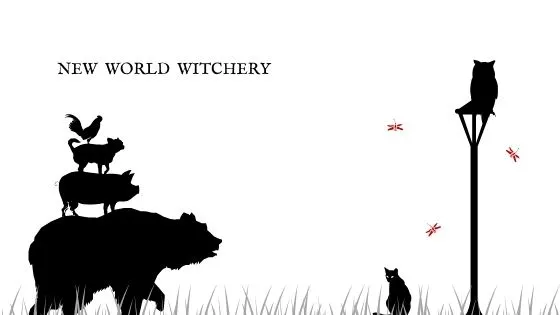In an effort to blend the subjects of recent blog posts, I thought today I’d start to look at a few of the key magical texts which would have had an influence on the American Colonies. Much of this entry will be directed by a reading of Owen Davies’ Grimoires: A History of Magic Books and Witchcraft, Magic, & Religion in 17th-Century Massachusetts by Richard Weisman, both of which I highly recommend reading. I am also pulling from The Silver Bullet by Hubert J. Davis and Witches, Ghosts, & Signs by Patrick Gainer. I’ll mostly be looking at the English colonies, but the French and Spanish colonies will also enter into the discussion a bit during later articles.
In general, the magical books of the early colonies came in three flavors: devil’s books, witch-hunting manuals, and grimoires. The Devil’s Book was frequently thought by Puritan settlers to be the ultimate embodiment of human sin—a willful signing away of one’s soul to infernal powers. By simply signing one’s name to such a book, a witch gained all her power and lost all her salvation (I use “her” because the popular conception of a witch tended towards the feminine, though male witches were not uncommon either). Some of the key features of a Devil’s Book and its accompanying rituals were:
The Profaning of the Bible – The witch would have to stamp upon a Bible or otherwise deface it before being allowed to sign. In some cases, a Bible itself was used to sign the witch into the Devil’s service. Several Appalachian tales record instances of witches simply making an “X” in a marred Bible to indicate their pact. In The Silver Bullet, witch Rindy Sue Gose performs this sort of ritual to seal her contract with the Devil:
“Fust, Rinday Sue cut her finger with a knife, and when hit started to bleed, she opened a little Bible and ‘peared to write sumpthin’ in hit with the blood from her finger. The Devil then nipped her on the left shoulder to give her a witchmark so’s she could suckle her familiar. Rindy Sue swore to give her soul to the Devil and to work for him the rest of her born days. Then, the Devil danced with her, and then went into the woods behindst thet tree” (Davis 17).
This action echoes the profaning of the Lord’s name or the recitation of a reversed “Our Father” as a way of breaking the bonds of Christianity for a witch. Not that you should read much into that, of course.
The Use of Blood as Ink – When witches made their mark, they often didn’t actually sign their name. In a time when general literacy was still low (though it should be noted that literacy among Puritan men was quite high for the era), not everyone would be expected to have a “signature.” Instead, they would have a “mark,” often an “X” which they used as an indication of their agreement to a contract. To personalize this mark in the rituals of witchcraft, a witch wouldn’t simply take an inked quill and make a fancy “X,” though. Instead, her blood was an indication that the pact bound her body and soul to the Devil. Puritan minister William Perkins described the process (most business-like) as follows:
“The express and manifest compact is so termed, because it is made by solemn words on both parties. For the satisfying hereof, he [the future witch] gives to the devil for the present, either his own handwriting, or some part of his blood as a pledge and earnest penny to bind the bargain” (Weisman 36).
The Devil sometimes used a great iron pen to draw the blood from the witch before having him sign his name, and in cases where the book was not a defaced Bible, the great book contained hundreds of other blood signatures from other witches.
Owen Davies observes in his book that the drawing up of a pact between a witch or sorcerer and an infernal representative was nothing new—look at the legend of Faust for example. What made these New World magical compacts unique was that the witch did not draw up the document herself, but rather was lured into signing a book which she would not take possession of, but rather which remained in the custody of her magical Master. All her magic, then, would be learned without the aid of books, at least in this model of New England Colonial witchcraft. Indeed, the Devil presented himself or his imps to the witch as her means for accomplishing malefic magic rather than gifting her the use of dusty tomes of magical lore and spells. In short, the Devil’s Book was merely a roster of the souls won to his service, and possessed little magical power in and of itself, at least superficially. However, many witches might claim that a deeper reading of the Devil’s Book phenomenon reveals that the act of writing in blood on a sacred object in fact demonstrates a type of very old and powerful magic. Thus, such a book, if it could be wrested from the Devil, would be very powerful, indeed, perhaps containing the magic of all those who had signed before.
Next time we pick up this thread, we’ll be looking at the witch-hunting books, and why they may have actually helped more witches in their spellcrafting than they actually hurt by “revealing” them.
Thanks for reading!
-Cory
